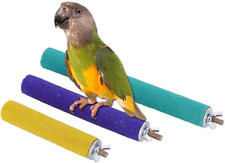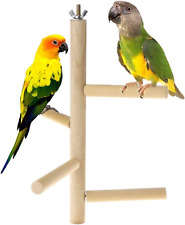Feline Old Age Through to Bereavement – Knowing When to Let Go

Ideally you would like him to die peacefully in his sleep, and he may well do this. You may be familiar with the idea that injured, sick or very old cats ‘go off to die’, but unaware that they die from dehydration, starvation or self-neglect because they are unable or unwilling to drink, eat or even seek attention. If he goes missing and never returns, you will never know whether his end was painless or protracted. Disappearance or sudden death causes much anguish because you had no time to prepare and no time to say goodbye in the way that you wanted. As your cat grows older, you have an opportunity to come to terms with the inevitable, but when the end comes it will always be "too soon".
With recent advancements in cat care and medical knowledge, your cat can enjoy reasonable health into old age. Many old cats die peacefully, but some reach a point when life is no longer enjoyable and the owner must decide if euthanasia is kinder in order to prevent further suffering. Euthanasia is an act of love towards a cat no longer able to enjoy life. "Euthanasia" literally means ‘gentle death’. Other terms you may hear are ‘put to sleep’, ‘put down’, ‘put out of its misery’ or, less kindly, ‘destroy’. Veterinary staff may use the term ‘humane destruction’ which is another technical term for euthanasia. It is a caring act, not a callous act therefore it is not "murder".
The decision to end a life is never easy. It causes much soul-searching and it takes courage to assume this last responsibility to a much loved pet. In most countries there is also no easy human comparison although many would like to see the same compassionate act made available for suffering humans. The cat/owner bond is very special so it is easy to become emotionally caught up in keeping your cat alive when your own common sense tells you the end is approaching. A good vet helps you to decide when it is time to let go, but only you can make the decision.
Put yourself in your cat’s paws and consider things from the its viewpoint:
- Is his quality of life now reduced so much that he is no longer happy?
- Is he so old and frail that life is a burden to it, not a joy?
- Is he distressed and there is no way of relieving its distress?
- Is he suffering incurable pain or discomfort which cannot be alleviated by drugs?
- Has he been severely injured with no hope of recovery?
- Does he have an progressive or age-related condition which can no longer be alleviated or managed?
- Has he reached the final stages of a terminal illness?
- Have degenerative change made him behaviorally unsafe to himself and/or his owners?
The bottom line is: Is this any life for my much loved pet, or is it merely an existence?
Cats live for the here and now. What matters to a cat is the current quality of life not its life expectancy – cats have little concept of future time. An illness may be temporarily treatable, but ultimately reaches a point when the cat no longer enjoys life. He is visibly distressed, withdrawn or incontinent. Having seen him when he is happy and healthy, you will recognize when he is miserable. A caring owner understands their final duty towards their cat is to prevent further suffering by procuring a swift, painless release from life. Sometimes, a terminally ill or injured cat is given life-prolonging treatment because the owner cannot yet come to terms with its condition. It is hard to come to terms with mortality in general.
Modern drugs are extremely fast-acting and the end is very peaceful compared to the distressing later stages of a terminal illness or age-related illness. Your vet administers an overdose of anesthetic by injection and the cat falls into a painless and final sleep. If, during its life, your cat has been a cherished member of your family, this is the last, and often most compassionate, duty you can perform for him.
Though the act provides a gentle death, it is irreversible – you cannot change your mind halfway through and can feel like a betrayal of trust. Some owners feel they have murdered a trusting friend, others feel guilt at deferring the end for "too long". With an old and frail cat it is tempting to wait another day or another week, hoping that he will die naturally in its sleep so you don’t have to make the decision. The reality is that he will linger uncomfortably, finally succumbing to dehydration, starvation, suffocation or to gradual poisoning from liver or kidney failure.
Cost of treatment may be the deciding factor at a very early stage. Unless the cat is insured, the owner has savings, can get a loan or the vet offers a pay-by-installments plan, any available treatment may simply be too expensive.
What Do I Know About My Cat’s Illness or Condition?
In order to make a wise decision you will want to know about your cats condition and whether treatment will gain your cat some borrowed time.
- How much do I know about my cat’s illness or condition?
- Is he in pain, distress or mild discomfort?
- If I can alleviate his pain will he have a reasonable quality of life for a period of time?
- Are there any new treatments available for his condition?
- Is there a surgical option – and is it fair for my older cat to have surgery?
- What about a second opinion or a specialist opinion?
- Can I afford the treatment?
- Can I administer treatment e.g. tablets, injections, prescription diet, manually expressing its bladder and/or bowel?
- Will he physically resist treatment?
- Is pain relief alone an option (even though it means a shorter life expectancy)?
- How fast will he deteriorate without treatment?
- How fast will he deteriorate with treatment?
- How fast does his illness progress and what are the signs of deterioration?
Most vets recommend that life be prolonged only while the cat has a reasonable quality of life. While a second opinion may be helpful to you (some vets specialize in certain conditions), don’t prolong life in the hope that the umpteenth consulted knows of a treatment or a that a medical breakthrough is imminent. A second opinion may be useful because different vets have different specialisms or be unfamiliar with the ailment or with cats in general. In these cases a good vet knows his limitations and should refer you to a specializing vet. Many vets and owners use the internet for information. Among the good articles, there are sensational articles and charlatans. Some omit to mention the (high) failure rate or that the treatment is experimental (laboratory animals, small field trials).
Find out about your cat’s illness or condition. Ask your vet to explain it in simple terms and ask sensible questions. Write down your questions so you don’t forget any. Treatments you see on the internet may be offered in one country or locality but not be available elsewhere, or not be feasible due to lack of expertise. Some treatments are not affordable. Your vet may give you information leaflets produced by veterinary associations or welfare associations. He may know of specialists offering experimental treatments. They may be situated some distance away which means a lot of traveling or leaving your cat as an in-patient. The word ‘experiment’ does not mean vivisection – it is more like an advanced hospital offering experimental treatments. Whether the treatment is successful or not, your cat will not be made to suffer unnecessarily. Lessons learnt from treating it may help other cats in the future.
If you have any misgivings about experimental treatments, then discuss these. If the veterinary hospital offering the treatment is some distance away, you may decide that travel and separation will distress your cat or that you simply cannot afford it. As the owner, you know your cat better than anyone else and a good vet respects your decision if you decide against further treatment and will help make your cat comfortable using treatments his clinic can offer. Choose what you believe will cause your cat least distress.
When faced with the difficult choice of whether or not to attempt life-prolonging treatment with no guarantee of success, I sometimes have to say, "He’s had a good life, I will not prolong it just because I can’t bear the thought of losing him."
What is My Cat’s Life Expectancy & Life Quality?
- What sort of life expectancy does my cat have with/without treatment?
- Will treatment prolong life or merely prolong suffering?
- Will the treatment or side-effects cause distress for either of us?
- Do my other cats risk being infected or can they be inoculated?
Having learnt that your pet is cannot be cured or is deteriorating, you will probably ask ‘how long has he got?’ Some conditions begin slowly but the rate of deterioration speeds up as the effects become cumulative. Other conditions progress rapidly after symptoms first appear. Many cats reach an advanced stage of their condition or illness before showing symptoms. Cats also differ in the way they cope with illness and respond to treatments. There may be no hard and fast forecast about life expectancy, just general guidelines and knowing what signs signal further deterioration. Knowing whether the cat has days, weeks or even years of relative health will affect your decision.
Vets give estimates of life expectancy depending on the normal rate of deterioration according to textbooks and their own experiences, the stage of illness/deterioration the cat is currently at, the cat’s age and its general condition. They normally advise as to what sort of quality of life the cat can expect and for how long. I’ve had elderly cats live very comfortably on "borrowed time" for 3 times the estimate while others managed only a third of their estimated "good quality life expectancy".
As your cat’s condition deteriorates and the euthanasia decision gets closer; it is gets harder because you may have nursed and bonded more strongly. His rate and stage of deterioration can be measured by blood, urine and stool samples, tissue samples, X-rays and ultrasound scans (depending on the nature of the condition). For example, the levels of urea and creatinine in the blood gives an accurate measure of kidney function. The higher the levels, the worse the problem. Dialysis, diet and drugs can slow chronic renal failure, but not reverse or halt it. Once urea levels reach a certain threshold, death is inevitable and unpleasant so most vets recommend euthanasia before that point.
Assess the side-effects and risks of treatment. Modern anesthetics are very safe, but weekly anesthesia for dialysis sessions is stressful for an older cat’s body. Can your cat survive comfortably, albeit for a shorter period, without a potentially distressing course treatment? How will he react to a severely restricted lifestyle? Some diseases are infectious though he may stay relatively healthy for a while but can you keep him from infecting other cats?
Remember – he thinks in terms of current quality of life, not of life expectancy. His concept of the future is limited to the short term. He doesn’t make long-term plans. Age is a winding down, it is a natural process not a disease. You can treat many of the distressing symptoms related to age, but no-one can cheat death forever. Without death, there would be no room for the newborn.
Home Nursing & Giving Medication
- Will other commitments prevent me from giving medication or from getting my cat to the vet regularly?
- Who will give treatment when I am away from home for any reason (e.g. work)?
- How often must he go for check-ups?
- Does my vet do house calls or out-of-hours appointments?
- Must I take my cat for check-ups at the clinic because it needs specialist facilities/equipment?
- Can I afford long-term treatment for the cat?
- Do I have pet insurance and does it cover this sort of treatment?
Life-prolonging treatment may mean daily medication and nursing but not all owners can cope with this and an extremely uncooperative cat may be impossible to medicate at home. Can you both manage daily trips to the vet clinic for treatment? A determined cat may resist all attempts to nurse it until it is too weak to resist, by which time treatment may be ineffective. You may have to settle for a shorter life expectancy without medication.
You need to know what side-effects to expect and whether you can cope with them – some medications cause diarrhea or behavioral changes. In some cases, side-effects outweigh the benefits of treatment. Sometimes, the economics of the situation will be a major factor. Don’t feel guilty just because you couldn’t afford a particular treatment. You have no guarantee that the treatment would have worked in the case of your cat. The important thing, from your cat’s point of view, is that you provide it with a good home and good care during its lifetime and that you do not let it suffer or allow it to lose its quality of life.
You cat needs plenty of water and he loses almost as much fluid in his saliva when grooming, as he does through urination. He can become dehydrated due to frequent urination, diarrhea or vomiting. Watch for frequent drinking, dry nose, mouth or eyes and lethargy. Do a pinch test. Lift (tent) the skin off your cat’s back and pinch it. It should be elastic and bounce back in a second or two; if not, he is probably dehydrated. Your vet will determine the cause of the dehydration and treat any illness. If your cat is seriously dehydrated, your vet may administer fluids intravenously, subcutaneously (under the skin) at the scruff of the neck or peritoneally (into the abdomen). If your cat isn’t drinking voluntarily, you may have to give him water by dropper or syringe, but don’t squirt in too much as he may choke or water may end up in his lungs.
Your cat must eat when he is sick, but may lose his appetite (anorexia) because of a blocked nose. Cats rely heavily on their sense of smell to trigger their appetite. He can be tempted with special treats such as grilled chicken or poached fish. Use strong-smelling food or warm up canned food to body temperature to make it more tempting or hand feed him (he cannot see morsels right under his nose; if he cannot smell them, he doesn’t know they are there). If all else fails he can be syringe fed with liquid food until it he eats of his own accord. Cats can suffer liver damage from not eating for 2 or 3 days so it is important to get food into him to prevent this from happening.
You could puree some cat food or make a meat broth and carefully syringe feed your cat if it refuses all food. Vets and pet stores may stock liquid cat food – in the UK a canned liquid food for convalescent cats (Liquivite) is available from larger pet stores. Your vet may prescribe a drug to jumpstart the appetite, e.g. Valium, and investigate the reason for appetite loss. If all else fails and the cat can expect a good quality and reasonable length of life once recovered, your vet may insert a tube into the cat’s stomach for feeding. In cases where the mouth or esophagus are recovering from serious injury, this may be the only option. The tube is held in place with a bandage and a highly nutritious "glop" is syringed directly into the stomach. If this is because of mouth problems (e.g. a seriously broken jaw), you may have to continue this treatment at home.
Your cat’s weight depends on its size and breed as well as his age and general condition. If you can just feel his ribs under his coat it is probably the right sort of weight. Protruding bones mean an underweight cat or one so old that it has lost the fatty layer beneath the skin. If you can’t feel his ribs at all then he is probably overweight. Weight loss may not be hard to detect in a longhaired or obese cat. Fluctuations of 1.5 Kg (3 lb) over 3 months should be investigated, but minor fluctuations are caused by drinking, eating, urination and defecation. Monthly weight checks (weekly for ill cats) are advisable.
Some diseases cause wasting (cachexia) in the advanced or terminal stages. Many cats which die a natural death stop eating in the 48 hours before death – the body basically shuts down. Euthanasia is indicated if the cat is in distress at this time, otherwise provide a warm soft bed in a quiet place so that he passes in his sleep.
Deterioration
- Is he going downhill?
- Am I witnessing deterioration, the final crisis or just a hiccup?
- Is further treatment possible, or humane, at this stage?
Eventually his condition deteriorates, whether due to illness or to the physical and/or mental effects of sheer old age. Gradual deterioration goes unnoticed unless you are very observant or physically examine him regularly. Certain symptoms mean he has reached the final stages. He has no more enthusiasm for life, maybe no interest in life. He may be unable to rest comfortably, stand or even control his bodily functions. He may not know where he is, recognize you or be fully aware of his surroundings. Even if he is alert, I have known cats to simply sit there, in no apparent pain but not interested in food or water, awaiting their end in a what appears (to humans) a calm, dignified, accepting manner.
Right towards the end, a cat is often unable to hold his head up. He may rest with his head drooped and his nose touching the surface in front of him. I have always considered this a warning sign. I have also noted that the digestive system closes 48 hours before death, even if the cat continues to drink small amounts.
This shutdown may hasten the end through dehydration. Other organs may also close down and, if you are lucky, the cat will fall into a coma and be unaware of anything more. If this is the case, place the comatose cat somewhere warm, quiet and dark at floor level if it has not already chosen its final place (often under a bed or in a cupboard/closet). Every few hours check to see whether breathing has stopped. Breaths may come in gasps at long intervals, but as long as the cat is unconscious it is not suffering. You may choose to take your unconscious cat to the vet to hasten its journey. This will usually be done with a gaseous anesthetic, or possibly by injection directly into the kidney or heart rather than trying to find a leg vein.
Facing The Inevitable
Finally, you might not be able to defer the decision any longer. Modern drugs are extremely fast-acting and the end is very peaceful. The final stages of a terminal illness, however, can mean a painful, prolonged end. If, during its life, your cat has been well-cared-for, you owe it this last duty – a gentle death and not a slow one. Previous sections will have given you an idea of warning signs.
In making the decision it is helpful for owners to understand how euthanasia is performed. Euthanasia in domestic pet clinics is by anesthetic overdose, usually by injection into a vein or kidney, sometimes by gas if the animal is distressed by handling. Unlike the horror stories about human executions, it is very swift because of the animals low bodyweight. The knowledge that euthanasia lives up to its literal translation of ‘easy death’ and is painless and fast while a ‘natural death’ may involve convulsions, hemorrhaging, starvation/dehydration and, in the terminal stages of many illnesses, pain, may be the decisive factor.
Sometimes it is possible to delay euthanasia for a day without causing suffering for example where he has a terminal illness or is extremely old and the euthanasia is planned in advance. You may wish to give him a last night of pampering, his favorite foods or foods which were normally forbidden. This is a time in which to say goodbye and reassure him that he is very much loved. However, if he is suffering, or is already under anesthetic, he will not enjoy having his misery prolonged.













